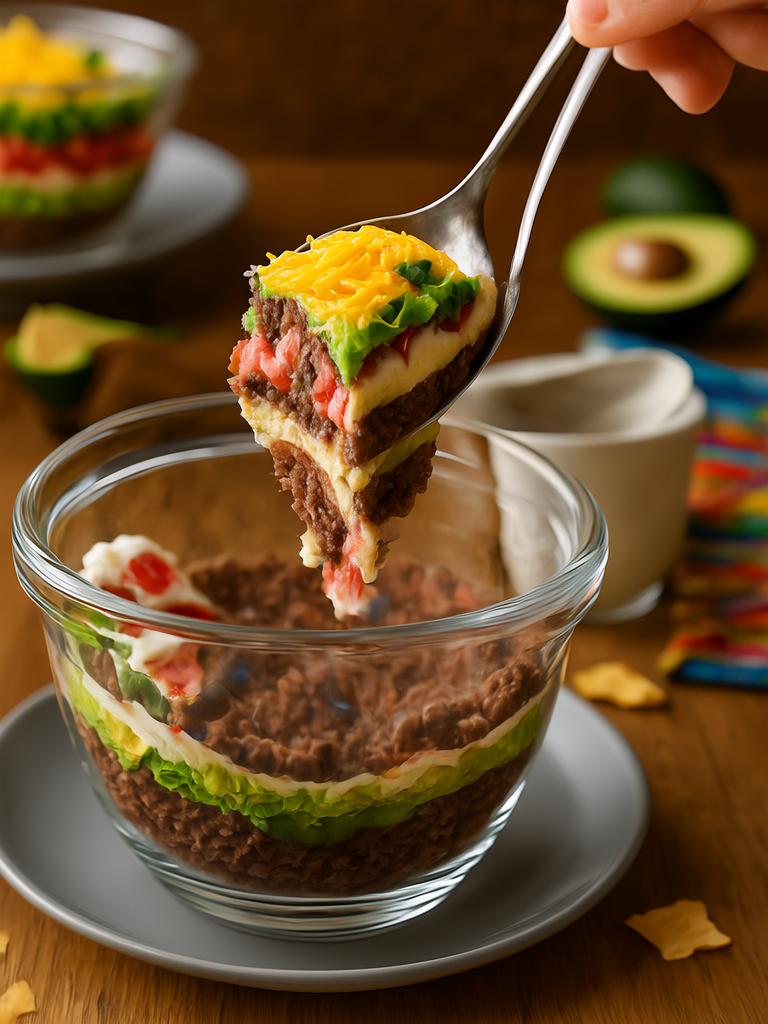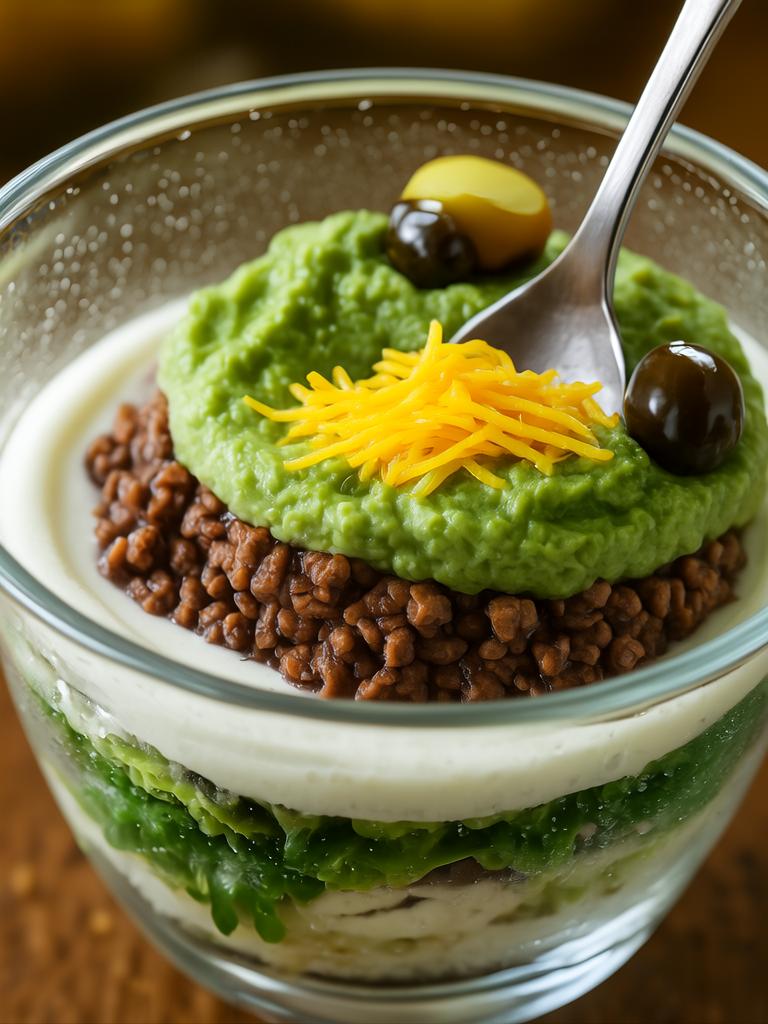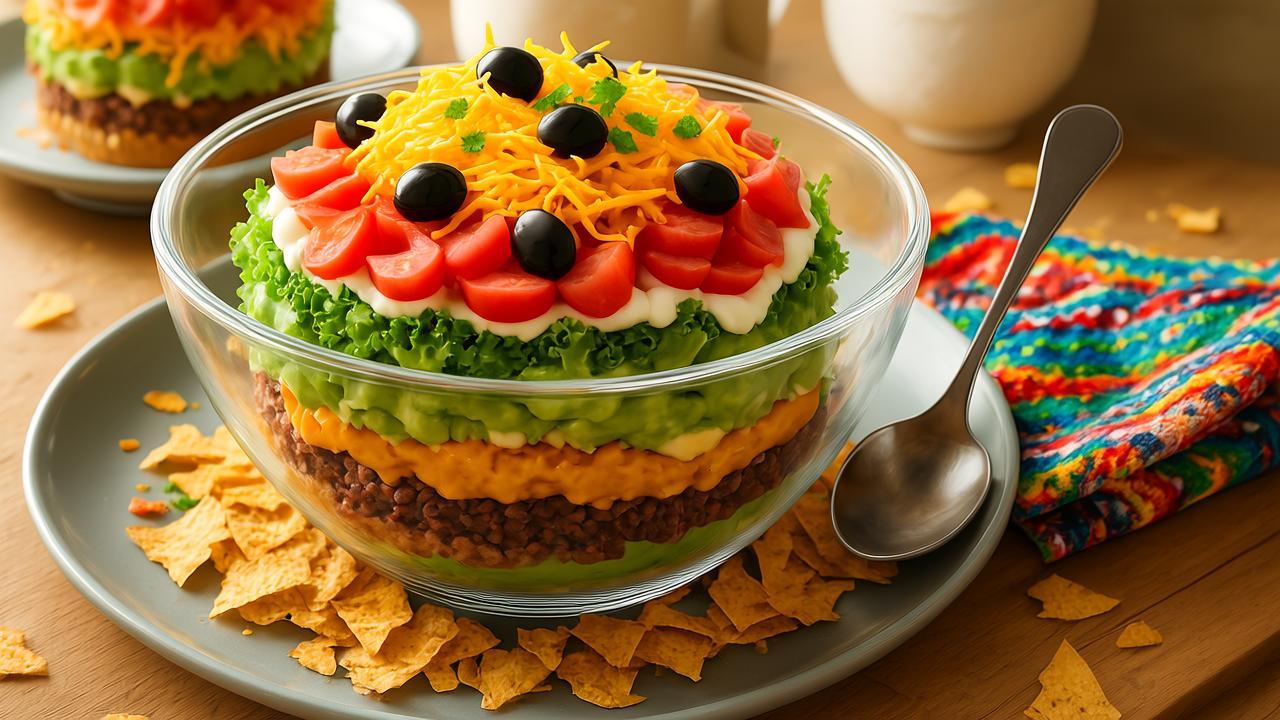Whoever said salads are boring never laid eyes (or teeth) on a seven-layer taco salad. It’s not just food. It’s architecture. Culinary architecture, that is. If your idea of a taco salad is a bowl of lettuce with shredded cheese and a squirt of sour cream—oh dear, you’ve been missing out.
This isn’t just another potluck filler. This is a strategic, flavor-bomb marvel built layer by layer with intent, balance, and beauty. A properly constructed seven-layer taco salad is a showstopper. It’s also a dish that, when made with care and understanding of texture, temperature, and flavor contrast, can rival the complexity of any composed plate you’ll find in fine dining.
Let’s take this taco salad out of the kiddie pool and into serious culinary waters.
What Is a Seven-Layer Taco Salad—Really?
Most people assume it’s just tossing together seven ingredients from a Tex-Mex aisle. But here’s the kicker—it’s not about what you use. It’s about how you use it. Every layer has a role. A job. An attitude.
Traditionally, the layers go something like this: refried beans, guacamole, sour cream, salsa, lettuce, cheese, and black olives. That’s the skeleton. But professionals? We play jazz with it. Swap beans with spiced black bean purée. Use cotija instead of pre-shredded cheddar. Roasted corn relish instead of jarred salsa.
More importantly—think about the vertical bite. Each forkful should grab all seven flavors. That means layering isn’t random. It’s mathematical. It’s poetic.
Layer 1: Beans—The Foundation Brick
Start with beans. Canned refried beans if you’re in a pinch, but please—elevate them.
Use cooked pinto beans smashed with ancho chile powder, garlic, and a bit of lard or olive oil for richness. Toss in a glug of lime juice to brighten things. Beans anchor the salad, both texturally and flavor-wise.
Why it matters? If your bottom layer’s too runny, everything collapses into a sad, wet mess. Keep it thick. Thick like cold peanut butter on a winter day.
Also: let those beans cool before layering. Hot beans melt the whole damn thing.
Layer 2: Guacamole—Not Just Mashed Avocado
No, not just avocados and salt. Guacamole here needs structure.
You want ripe avocados—no excuses. Add red onion, jalapeño, lime, salt, and a teeny whisper of cumin. Don’t overmix. Let it be chunky. Let it speak with texture.
If you’ve ever had browning guac ruin your salad’s aesthetic, here’s a trick—press plastic wrap directly onto the guac layer. Oxygen is the enemy. Seal it. Hide it from air like a secret.
Layer 3: Sour Cream or Crema—Acid Meets Fat
This layer cuts the fat of guac and cools the spice of beans. Don’t go low-fat. This is a salad, yes, but this ain’t diet food. Use full-fat sour cream or Mexican crema, and don’t just slap it on.
Whisk it lightly with lime juice and salt. Even add a little ground coriander for depth. Then smooth it into place like frosting a cake. This layer is a palate cleanser and flavor binder all in one.
Layer 4: Salsa—Fresh, Roasted, or Pico?
This is where things get a lil’ tricky.
If you use a watery salsa? Disaster. It seeps down. Makes everything soggy. You want either a fire-roasted tomato salsa that’s been strained or a chunky pico de gallo that’s more salad than sauce.
Better yet? Try a corn and tomato salsa with cilantro stems, not just leaves. Yes, stems. They’re where the flavor lives. Don’t believe me? Chew one.
Layer 5: Lettuce—Crisp, Not Limp
Iceberg gets laughed at by food snobs, but honestly, it’s perfect here. Crisp, cold, and hydrating. Romaine is fine too, but skip anything too delicate like spring mix. That stuff wilts just from eye contact.
Pro tip? Shred lettuce just before assembly. Rinse it in cold water, spin it dry like your life depends on it, then chill it in the fridge. Cold lettuce stays crisp longer. It’s not magic, it’s physics.
Layer 6: Cheese—Not All Cheese Belongs Here
Sharp cheddar is traditional. But why not elevate?
Use cotija for salty crumble. Or Oaxaca for a mild, creamy bite. Even pepper jack, grated fresh, can add some heat.
Do not—I repeat, do not—use bagged shredded cheese. That cellulose coating? It kills meltability, texture, and flavor. Grate it yourself. Trust me. Your fork will say thank you.
Layer 7: Toppings—More Than Decoration
Here’s where you throw personality.
Sliced black olives? Sure, go ahead. But why not try pickled red onions, radish slices, toasted pepitas, or crispy tortilla strips? You want crunch and zing on the top layer. A lil’ chaos. A lil’ drama.
One of my personal favorites? Crushed Takis. No kidding. Adds heat, tang, and attitude.

The Real Deal: Assembly Matters
This salad isn’t just about piling stuff on. The order matters. The moisture balance matters. Build in a glass trifle dish or wide bowl so the layers stay flat and visible. Wide = better fork access.
Wait at least 1 hour before serving to let the flavors chill and mingle. But not more than 4 hours—unless you want your lettuce to start crying.
And don’t mix it. Let the eater dig. Mixing ruins the ceremony.
What Professionals Do Differently
Let’s break the myth: this isn’t “lazy” party food. In professional kitchens, the seven-layer taco salad is a study in plating strategy.
Texture sequencing is everything. You don’t want soft-on-soft-on-soft. You need crunch, cream, bite, chew. Build layers based on those qualities. Not just taste.
Temperature play is subtle but critical. Beans should be room temp. Guac slightly cool. Lettuce ice cold. Sour cream chilled. Cheese neutral. That way, each bite carries its own mini temperature map.
And yes—salt every layer. Taste every layer. Do not rely on salsa or cheese to season the whole thing.
Common Mistakes and How to Dodge ’Em
Too much liquid: Drain salsas. Pat lettuce dry. Wet salad is dead salad.
Premature wilting: Assemble right before serving, and chill everything beforehand.
Wrong cheese: Pre-shredded = waxy sadness. Grate it fresh.
Layer slippage: Spread each layer gently and evenly. Uneven layers make the whole thing slide like a Jenga tower during an earthquake.
Overcrowding: If you’re making for a crowd, use a wider dish. Tall and narrow looks nice, but it’s hell to serve from.
Variations That Work (And Some That Don’t)
This isn’t a holy recipe. It’s a template.
Want to go vegetarian? Use lentils with taco seasoning instead of beef. Add roasted sweet potatoes for body.
Going keto? Ditch the beans and corn. Up the guac and cheese. Add spiced ground turkey with cumin and paprika.
Asian-Mex fusion? Try Korean bulgogi beef instead of taco meat. Gochujang in the crema. Kimchi salsa. Go wild.
But don’t—please don’t—add canned fruit. Pineapple salsa can work, but chunks of mandarin oranges? That’s where good taco salads go to die.
Data, Stats, and Food Psychology
You’d be surprised, but layered salads—especially taco versions—perform very well in food trends. According to a 2024 study by The Culinary Institute of America, “composed, layered salads with customizable toppings” saw a 46% increase in inclusion on restaurant menus compared to five years ago.
They’re Instagrammable. They’re interactive. And they fit perfectly into the fast-casual “bowl” trend dominating Gen Z and Millennial eating habits.
Interestingly, diners report higher perceived value for layered salads over tossed ones—even when portion sizes are identical. Visibility equals quality, at least psychologically.
Expert Tips to Serve Like a Pro
- Chill your serving dish beforehand. Keeps everything crisp.
- Use offset spatulas to layer neatly—those tools pastry chefs use for icing cakes? Yup, same idea.
- Label your layers at events. Guests love knowing what’s inside.
- Offer deconstructed mini bowls for picky eaters or dietary needs.
- Top with microgreens or cilantro blossoms for a fine-dining finish.

Conclusion: Salad? No. This Is a Strategy.
The seven-layer taco salad isn’t just a crowd-pleaser. It’s a dish that, when built right, shows culinary finesse.
From flavor layering to moisture management, this isn’t fast food—it’s fast art. It balances richness with freshness, crunch with cream, spice with cool.
So next time you build one, don’t just toss and stack.
Engineer it.
Feel the rhythm of the ingredients. Respect the layers. Build it like you’re plating a dish for a critic, not a crowd of 4th of July uncles.
Because even a humble taco salad can be an edible masterpiece—if you give it the respect it deserves.
FAQs
What are the traditional layers in a seven-layer taco salad?
Refried beans, guacamole, sour cream, salsa, lettuce, cheese, and black olives.
Can I make it ahead of time?
Yes, but only 1–4 hours ahead to avoid soggy lettuce and layer slippage.
What type of beans work best?
Homemade mashed pinto or black beans with spices give the best flavor and texture.
Should the salad be served warm or cold?
Serve chilled or slightly cool—never warm, or the layers will break down.
What’s the best cheese to use?
Freshly grated cheddar, cotija, or Oaxaca cheese works far better than pre-shredded.
How do I keep the guacamole from browning?
Press plastic wrap directly onto the guac to block oxygen and keep it green.
Can I customize the ingredients?
Absolutely—think of the seven layers as a template, not a rulebook.
How do I prevent the salad from getting soggy?
Drain wet ingredients, dry lettuce completely, and chill before assembly.
Is this dish vegetarian-friendly?
Yes, easily—just skip meat and opt for beans, veggies, or lentils.
What’s the ideal serving dish?
A wide, shallow glass bowl or trifle dish keeps layers visible and easy to scoop.
Can I add meat to this salad?
Yes—seasoned ground beef, shredded chicken, or spiced turkey work great as a bonus layer.
What makes this salad different from regular taco salad?
It’s layered intentionally, not tossed, to highlight texture, visual appeal, and balanced flavor in every bite.

Mariana is a passionate home cook who creates delicious, easy-to-follow recipes for busy people. From energizing breakfasts to satisfying dinners and indulgent desserts, her dishes are designed to fuel both your body and hustle.
When she’s not in the kitchen, she’s exploring new flavors and dreaming up her next recipe to share with the Foodie Hustle community.

